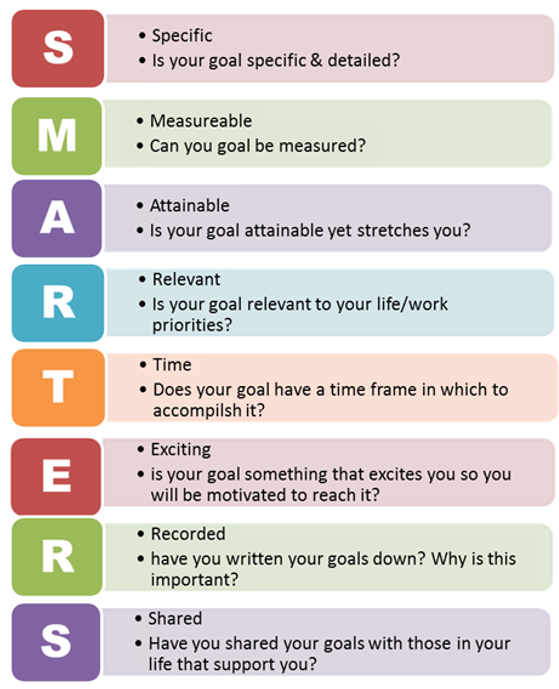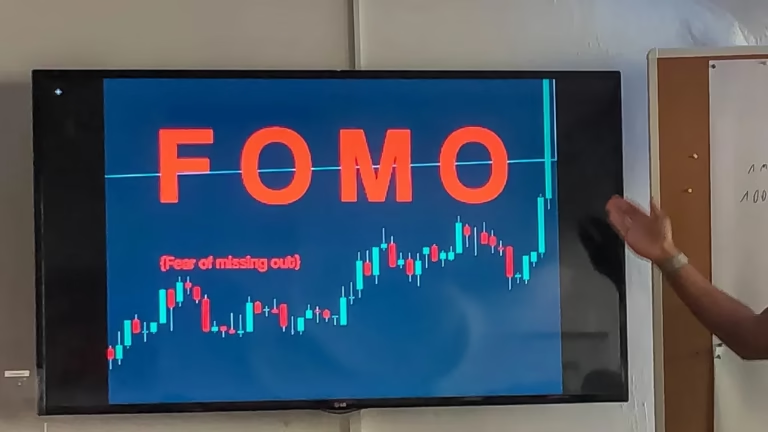The thrill is in the Journey — one Step in at a Time
It’s a new year again and there is hope, curiosity, and ambition in the air.
It’s time to set goals for this new trip around the sun. I encourage you to determine your goals and then check if they meet the “SMARTERS — Check”.

Don’t set a goal that is too broad, like: “I want to have more money in 2022.”
When you say how much more money you want to have each month, you also should describe what kind of money.
I hope you will say something like:
“I want to increase the passive income from my value assets by $1,000/month”.
Or
“I want to increase the net cash flow from my value assets to reach $12,000 in 2022.”
When you have identified that number (or whatever might apply to your goal), determine how you will measure the actual number and what you’ll use for it. Something like:
I will create an excel spreadsheet where I add the actual cash flow from each asset, and I set a reminder on my calendar exactly when to do the entries, i.e., each first Friday of the month for the previous month.
Your goals need to be attainable. If you know that you have about $30,000 to invest at the start of this year and can imagine that you might be able to add another $12,000 throughout 2022, you can do an attainability calculation like this:
$42,000 = 20% for my investments = $210,000 total asset value. I can get a 4-plex for this money where each door pays $250/month in cash flow = $1,000/month total = that’s attainable, but probably hard to find in a good neighborhood with the currently very inflated real estate prices.
Next, you want to check if that goal is relevant. If you set your goals each year, this goal is probably the next evolution to an earlier goal where you said something like:
“In 10 years from now, I want to be able to quit my job and get at least $6,000/month in passive income to pay for all the expenses in my life and have enough left to live my passion”.
If you haven’t set one of these larger “BHAG’s” (Big Hairy Audacious Goals), you should do that first applying the same SMARTERS approach and then make 2022 part of the more significant journey.
The BHAG needs to be time-bound, just like your goal for 2022 should be. It would help if you gave yourself goals for the year, but there is also nothing wrong with having a few goals for a quarter or 6 months, as long as they meet all the other parts of SMARTERS.
In this system, we encourage you to make the goal exciting. That is not as easy as it sounds. Many people can put something exciting in a phrase, but it doesn’t most of the time meet all the other criteria of SMARTERS.
To check for excitement in your goal, imagine how it would make you feel when you achieve it, how much closer it would get you to your BHAG, and how much energy you will get from going through the journey and then celebrate the accomplishment when you get there.
This is part of the reason why most people, myself included, recommend finding a quiet and comfortable place to work on your goals. Part of it is the sincerity you want to have when deciding what the goal or goals for the year shall be. The other part is the need to be able to let your thoughts float. Be a little wild and really imagine what you can do when you get to celebrate the achievement of your goal.

The next to last step is the recording of the goal. I suggest making some sort of poster you can put in your field of vision or maybe even a vision board with some images that remind you and energize you when you look at the poster.
There is one trick I like to mention here when it comes to visual reminders.
Our brain is constantly trying to reduce the amount of data it needs to handle. To do that, the brain uses a “relevance indicator.”
Imagine you are going to have to go to a new place for work or meeting on a regular basis in 2022. On the first trip, you will be excited, and your brain will register everything that’s new. That includes the route you take, the timing it takes, the alternatives you might have, the process of getting a badge at the reception desk when you arrive the first time, the picture taking and associated wait for the badge, the noises in the big entry hall, the pictures, wall colors, lights and gates, the process you need to take to get through the gate and to the elevators and all the other sensations until you get to your designated room or cubicle or space.
Try to remember how it was to go to your first college semester classes or to your first job.
Now try to recall how starting classes felt a year later. You will probably barely remember. Your brain is constantly running the relevance indicator and has learned from repetition that the route to that building is always the same and conveniently forgot the alternatives. It realized that you only need to get the badge one time and then can go straight to the gate and then the elevator. It literally forgot most of that badge-making and picture-taking process.
After dozens of repetitions, your brain realized that the color of the walls, the paintings and posters, and pictures were always the same in the exact same place. That includes the award plagues and the company mission and vision statements.
After a few months of doing the same routine, you can start a phone call at home, get in your car, drive to the location while sipping on the coffee you made, and get to the parking lot, through the gates, into the elevator, and into the office or cubicle while still on the phone and still sipping coffee.
You are on autopilot. Your brain has reduced the relevant information it needs to be aware of to the absolute minimum to keep you safe.
Any accident along the route that didn’t affect your path you would not recall or even know if it is real — not good if someone looks for a witness. The broken badge picture maker in the entry hall never registered in your mind even though people were talking about it passionately.
None of this and a thousand other things matters because your brain was on autopilot, which allowed you to drive, speak on the phone, drink coffee and still make it on time.
Guess what? The brain does the same thing with the poster of your goal. That’s why you need to put a reminder on your calendar to move the poster at least 1x/month, and I even suggest that you attach an activity to the goal poster.

Basically, create an activity for your brain. Here is an idea:
Get yourself one of those 365-day calendars with motivational quotes and put it very close to where your poster of the goal is. Leave an area on the poster where you can make a little mark when you finish reading the quote and a pen or pencil to make the mark. Now you set a time in the day (I suggest in the morning) when you go through this routine.
This is why you need to move the poster and make the goal check an activity. If you don’t, there is a risk that your brain will eliminate your attention to the goal. It needs to keep registering in the relevance indicator.
Finally, you want to share your goal with a few people important to you, and at least one person you know can hold you accountable. Sharing serves a few purposes:
- You get feedback about your goal and an opportunity to answer any questions the people you share with might have. That allows you to gain clarity in your mind about your goal and the steps to take to get there. Use any skeptic you encounter as motivation — “I am going to show them that I can do it!”
- You often get encouragement, especially when you share all the parts of SMARTERS and not just the goal itself. This external energy can feed you when you have doubts.
- Your accountability partner, who should be someone who wants you to achieve your goal but also lends a shoulder to cry on when things don’t go as planned, will help you stay on track and remind you what you already do throughout the year and what’s still ahead of you. This partner should also ask you as often as possible about the steps you are taking to achieve your goal. The more you can describe what you did, the more positive energy and motivation you will feel. In addition, you will get more and more convinced that you can actually achieve it. The hardest part is getting started and completing the first steps.

Speaking of steps.
When you completed your SMARTERS goal and made the poster and established the routine, and set the calendar reminders, you are not done yet.
For most goals, you know that there are certain steps you will have to take repeatedly throughout the year. Try to also think of and record any steps that you think you need to take and record those as well.
Put the steps in a sequence so you can develop a routine.
If your goal is aiming for something, you have never done and have very little expertise in, get a mentor to help you with the information you need to have a chance of success.
If you had the goal we mentioned above and you would ask me to mentor you, here are a few things we would put as steps:
Goal: “I want to increase the net cash flow from my value assets to reach $12000 in 2022.”
Steps:
- Get mentor
- Analyze available funds for down payment
- Settle on a location to invest — where should the assets be (could be more than one location)
- Mentor provides an introduction to the asset providers in the selected locations. You have intro calls setup and complete to get to know them and their systems
- Analyze offers using the mentor’s system and calculators to find suitable properties/assets.
- Have a discussion about corporate structure and asset protection with the mentor. Create a separate SMARTERS goal out of this aspect and separate family trust and asset management liability protection structure.
- Use mentor relationships to set up funding and get approval letters.
- Select assets and sign contracts/reservations. Transfer earnest money.
- Use mentor relationships to establish insurance relationships to be ready when the assets close
- Work with the mentor on all documents that need to be completed in the process of purchasing all the way to closing on the assets and adding them to your portfolio
- Review entries in the cash flow excel spreadsheet monthly with the mentor and learn about alternative value asset options to consider for the next round of goal setting.
I hope this gives you an idea of what is really needed to set good goals and achieve them at the end of 2022.
I am often sad when I hear or read how many people had awesome new year’s resolutions and how few actually really completed or achieved them.
I suspect they don’t put enough time and effort into the goal setting and steps routine development from the start.
I know you are smarter than that, and if you like my help, my team and I are here, ready to help you achieve your goals for 2022.
Happy New Year!





